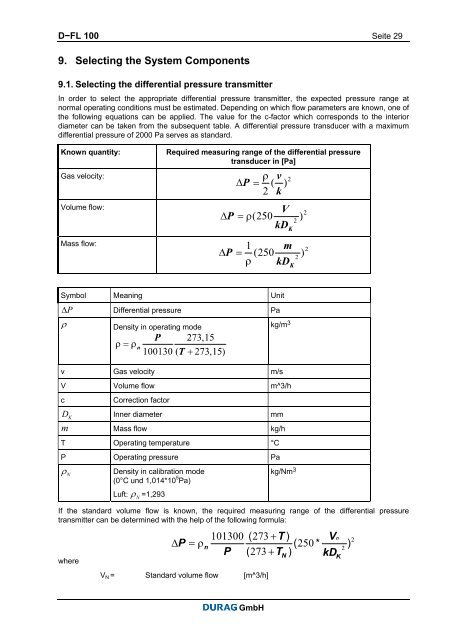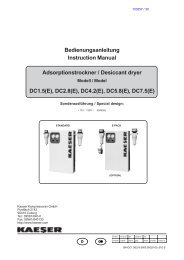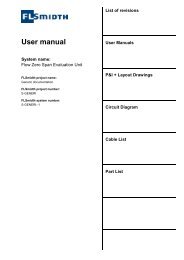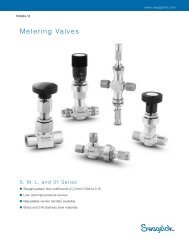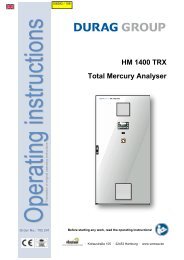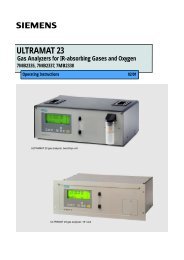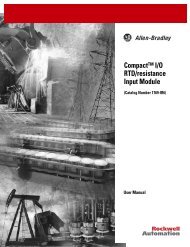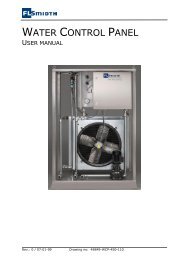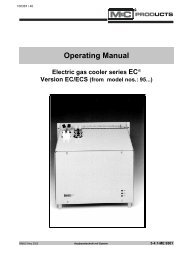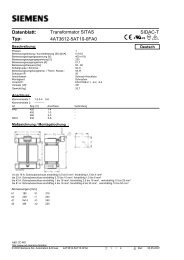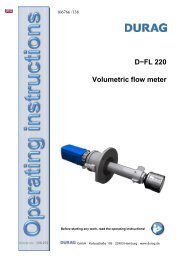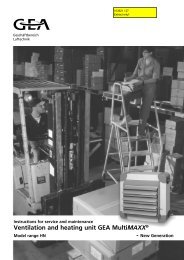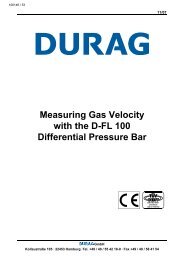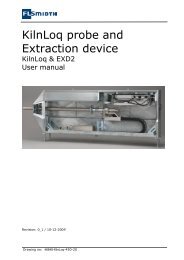Measuring Gas Velocity with the D-FL 100 Differential Pressure Bar
Measuring Gas Velocity with the D-FL 100 Differential Pressure Bar
Measuring Gas Velocity with the D-FL 100 Differential Pressure Bar
- No tags were found...
Create successful ePaper yourself
Turn your PDF publications into a flip-book with our unique Google optimized e-Paper software.
D−<strong>FL</strong> <strong>100</strong> Seite 299. Selecting <strong>the</strong> System Components9.1. Selecting <strong>the</strong> differential pressure transmitterIn order to select <strong>the</strong> appropriate differential pressure transmitter, <strong>the</strong> expected pressure range atnormal operating conditions must be estimated. Depending on which flow parameters are known, one of<strong>the</strong> following equations can be applied. The value for <strong>the</strong> c-factor which corresponds to <strong>the</strong> interiordiameter can be taken from <strong>the</strong> subsequent table. A differential pressure transducer <strong>with</strong> a maximumdifferential pressure of 2000 Pa serves as standard.Known quantity:Required measuring range of <strong>the</strong> differential pressuretransducer in [Pa]<strong>Gas</strong> velocity:Volume flow:Mass flow:Symbol Meaning UnitΔP <strong>Differential</strong> pressure Paρ Density in operating mode kg/m 3v <strong>Gas</strong> velocity m/sV Volume flow m^3/hcCorrection factorD KInner diameter mmm Mass flow kg/hT Operating temperature °CP Operating pressure Paρ NDensity in calibration mode(0°C und 1,014*10 5 Pa)Luft: ρ N=1,293kg/Nm 3If <strong>the</strong> standard volume flow is known, <strong>the</strong> required measuring range of <strong>the</strong> differential pressuretransmitter can be determined <strong>with</strong> <strong>the</strong> help of <strong>the</strong> following formula:whereV N = Standard volume flow [m^3/h]GmbH


